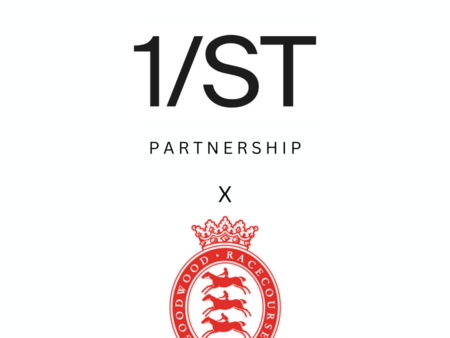GambleAware launched its Community Resilience Fund (CRF), an initiative aimed at addressing gambling-related harms in underserved communities. Recently, GambleAware released an evaluation report detailing the first year of this fund’s implementation. This report sheds light on the successes, challenges, and ongoing efforts of the CRF-backed organizations working to combat gambling harms.
An Overview of GambleAware’s Community Resilience Fund
Launched as part of GambleAware’s broader strategy to reduce gambling harms, the Community Resilience Fund provided financial support to 21 community-based organizations across Great Britain. The primary objective of this initiative was to empower grassroots organizations that are well-positioned to connect with vulnerable populations often overlooked by traditional support services.
These organizations included charities and community groups focusing on ethnic minorities, people experiencing poverty, and those at risk of homelessness. With grants from the CRF, these groups conducted targeted awareness campaigns and early intervention programs designed to reach individuals who might not otherwise seek help for gambling-related issues.
Key Achievements in the First Year
According to the evaluation report, the CRF initiative successfully reached around 100,000 individuals with awareness messages, while more intensive levels of support were provided to over 5,900 people. Despite many of these organizations having limited prior experience in addressing gambling-related harms, their community ties enabled effective engagement with at-risk groups.
Innovative Approaches to Tackling Gambling Harms
One of the standout recipients of the CRF was Big Issue Changing Lives CIC, which developed new strategies to identify and support those struggling with gambling. Their initiatives included:
- Distributing educational resources to raise awareness about the risks of gambling.
- Conducting screening activities to identify individuals at risk.
- Providing referrals to mental health and addiction services for those in need.
These efforts were instrumental in delivering early interventions, thereby preventing the escalation of gambling-related issues in vulnerable communities.
Independent Assessment of the CRF’s Impact
An independent evaluation carried out by Ipsos and New Philanthropy Capital highlighted that GambleAware’s support significantly enhanced the capacity of these organizations to address gambling harms. The assessment also noted an improvement in the confidence and awareness levels among staff members, which contributed to more effective outreach and intervention strategies.
Increased Organizational Capacity
The independent assessment found that the financial and strategic support provided by GambleAware enabled organizations to:
- Expand their service offerings to include gambling harm reduction initiatives.
- Equip their staff with better training and resources to handle sensitive cases.
- Foster partnerships with other community-based services to broaden their outreach.
Challenges Faced During the First Year
While the CRF achieved significant milestones, several organizations reported challenges in reaching their intended audiences. A major obstacle cited was the stigma associated with gambling, which often prevents individuals from seeking help. This hidden nature of gambling harms, particularly among ethnic minorities and those facing economic hardships, made it difficult for some organizations to fully leverage their outreach programs.
Addressing the Stigma Around Gambling Harms
In response to these challenges, GambleAware has intensified its efforts to reduce stigma through ongoing campaigns.
According to Anna Hargrave, Chief Commissioning & Strategy Officer at GambleAware: “It is concerning that stigma may have stopped some people coming forward for help from the organizations which received funding. At GambleAware, we have campaigned to try and end the stigma associated with gambling harm so that people feel able to come forward and get support, and we will continue working towards this goal.”
The Path Forward: Enhancing Community Resilience
GambleAware’s evaluation report underscores the importance of community-led initiatives in reducing gambling harms. The first year of the CRF has laid a strong foundation, but there is still much work to be done. Looking ahead, GambleAware plans to:
- Expand the CRF initiative to include more organizations and communities in need.
- Strengthen partnerships with local authorities, healthcare providers, and other non-profits to create a holistic support network.
- Invest in further research to better understand the barriers to accessing gambling support services.
- Enhance training programs for staff to improve outreach and intervention capabilities.
Conclusion: Building a Stronger Support System
The first-year evaluation of the Community Resilience Fund by GambleAware demonstrates the effectiveness of a community-driven approach to reducing gambling harms. While challenges such as stigma and hidden gambling issues persist, the progress made by CRF-backed organizations highlights the potential of targeted interventions.
FAQs About GambleAware’s Community Resilience Fund (CRF)
1. What is the Community Resilience Fund (CRF)?
The Community Resilience Fund is an initiative launched by GambleAware to provide financial support to community-based organizations across Great Britain. The fund aims to reduce gambling-related harms, especially in underserved communities, by supporting awareness campaigns and early interventions.
2. How many organizations received funding from the CRF?
A total of 21 community-based organizations received grants from the CRF to implement projects focused on reducing gambling-related harms in vulnerable populations.
3. What types of organizations were supported by the CRF?
The fund primarily supported charities and community groups that assist ethnic minorities, people living in poverty, and individuals experiencing homelessness. These organizations were chosen for their deep community ties and ability to reach at-risk populations.
4. How many people were reached through the CRF-funded initiatives?
The initiative successfully reached around 100,000 individuals with awareness messages and provided direct support to over 5,900 people.
5. What kind of support did the organizations provide?
CRF-backed organizations conducted targeted awareness campaigns, screening activities, distributed educational resources, and provided referrals to mental health and addiction services for individuals experiencing gambling harms.
6. Which organization stood out for its innovative approach?
Big Issue Changing Lives CIC was one of the standout organizations. It developed new strategies to identify individuals at risk and provide support, including resource distribution and referrals to support services.
7. What were some of the challenges faced by these organizations?
Many organizations faced challenges in reaching their target audiences due to the stigma associated with gambling. The hidden nature of gambling harms made it difficult for some people to come forward and seek help.
8. How did GambleAware address the stigma around gambling?
GambleAware has been actively working to reduce stigma by running campaigns that encourage individuals to seek help. The goal is to create a more supportive environment for those affected by gambling harms.
9. What was the outcome of the independent evaluation of the CRF?
An independent assessment by Ipsos and New Philanthropy Capital found that GambleAware’s support significantly enhanced the capacity of community organizations to address gambling harms. It also noted improved confidence and awareness among staff, leading to more effective early interventions.
10. What are GambleAware’s plans for the CRF?
Looking forward, GambleAware plans to:
- Expand the CRF initiative to include more communities.
- Strengthen partnerships with healthcare providers and local authorities.
- Invest in further research to understand barriers to accessing support.
- Enhance staff training programs to improve outreach efforts.


















